Tag:ports
Today we planned to go to Seaworld and enjoy a whale-watching cruise. Another epiphany we came across in Queensland is morning comes SOOOO early. Like around 4.30 am. We’d wake up in bright daylight thinking OMG slept in, check the watch, nope, it’s 4.45 am! Queenslanders say they don’t need daylight saving. It would help! Mornings would start a little later, and daylight would last past 6 pm. Everyone is up with the sparrows. Sitting on the balcony at 5 am with a coffee, the roads are starting to build with traffic. People are walking to bus stops.
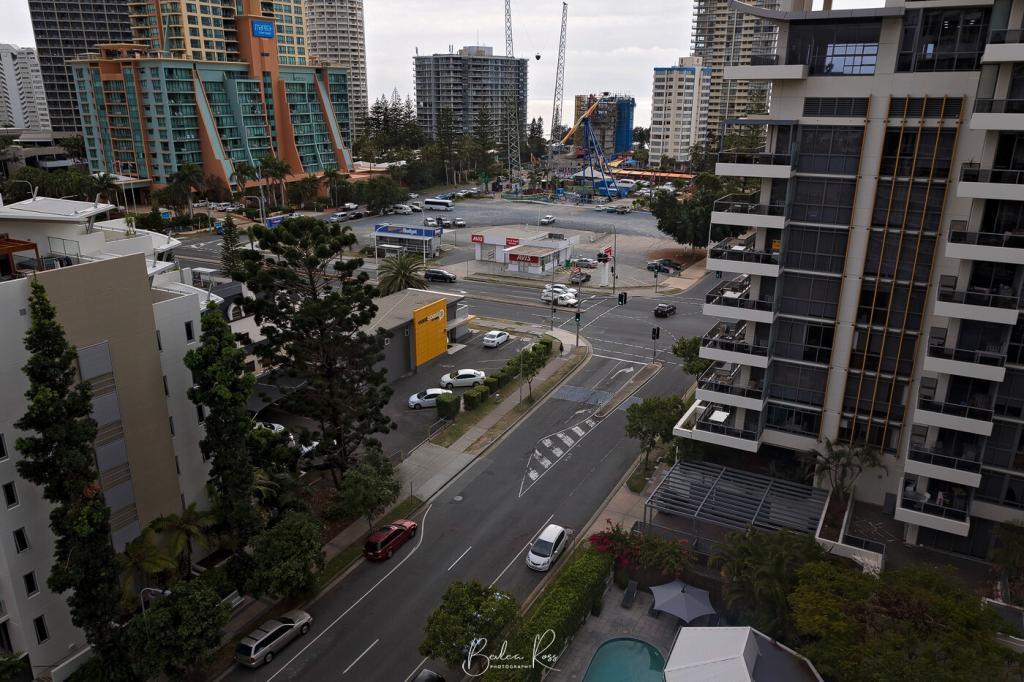
Whale Cruise
We left the apartment around 8.30 am (virtually mid-afternoon to a Queenslander) and headed to Seaworld, which was only about 13mins away. Massive queue when we got there after queueing for about 20mins we found we were in the wrong queue and were sent to a smaller building for Whale watching/Seaworld tickets. You can’t buy a combo ticket for that at Seaworld. You have to buy it from the Marina. I know. It makes no sense to me either. Queenslanders defy logic. We wandered over, bought our tickets, and boarded the whale watching vessel. Very nice, new, and comfy.
Just as we were heading out, we came across a mother and calf in the estuary, which is unusual, so the boat took on the task of herding them back out to sea.

Once out on, we went hunting for whales in earnest and had quite a successful day of sightings. Sadly, whales turned out to be as hard to shoot as birds. They’d be breaching and have a grand old time; the boat would race over, and nothing, nada. Whales gone. Then we’d see them off in the distance again and repeat the process. Another pod would swim past us a few times as we floated there, waiting for the original show-offs to emerge. Overall we saw three breachings and many tail flips. Quite a few mothers and calves. And a mother and calf being escorted by a ‘bodyguard’ whale.
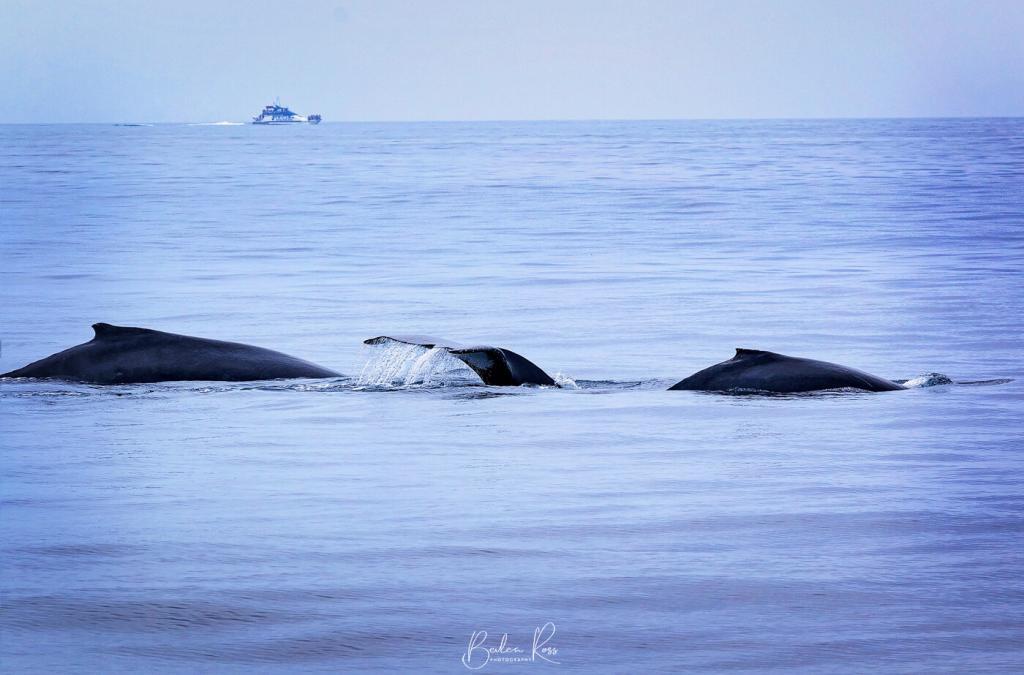
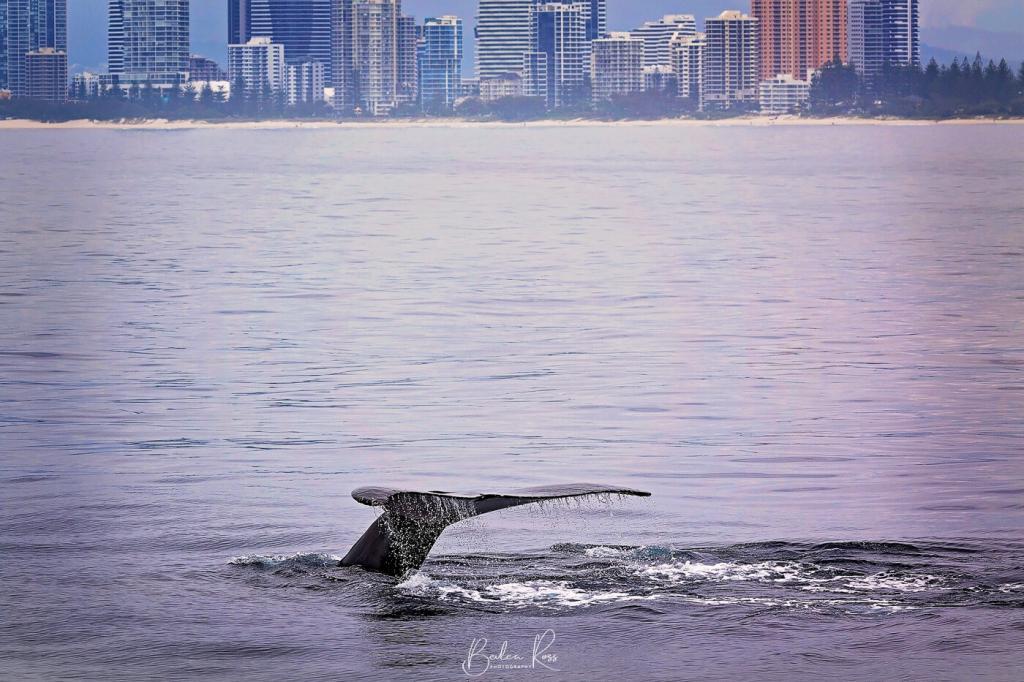

Seaworld
At the end of our cruise, we headed into Seaworld, grabbed lunch and went for a wander around. The Dolphin and Seal shows were later in the afternoon. And by now, it was hot, and we’d had enough of lugging the massive lenses around, so we headed straight for the polar bear enclosure.
Seaworld had been on our list to visit once we heard that a baby polar bear had been born, and the timing of our holiday coincided with him going on display. Unfortunately, I think he was asleep in the cave cause we only saw Mumma Bear, and she kept going back to the cave, possibly checking on the cub. Who remained a no-show sigh But we did see Mumma Bear. Seaworld is the only place in Australia that still has a polar bear display.

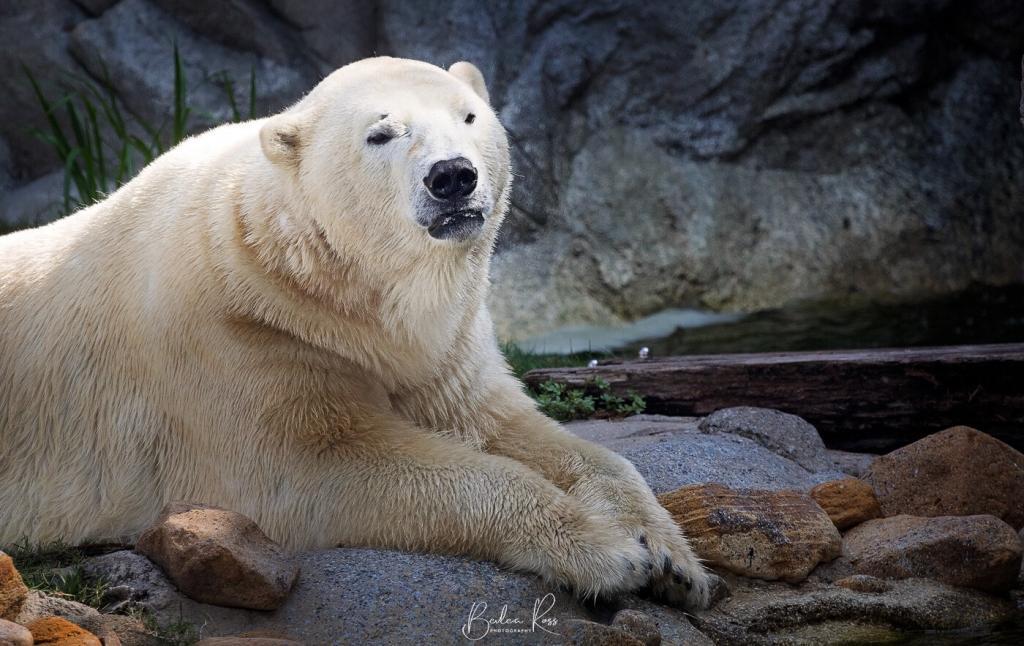
Passing the Dolphin enclosure on the way out, we added a few more tails to our day haul of Tails. It was now 30C in the shade, and we headed back to the car and our apartment for a shower and cold wines.

Princes Pier in Port Melbourne is a heritage-listed structure adjacent to Station Pier. The railway lines used to down the centre connecting it to the Port Melbourne Rail line. For this reason, it was initially named New Railway Pier.
Wartime Use
The pier opened on 29 September 1914. Significantly, the first Australian convoy carried troops to fight in WW1 left from its newly completed first section. Many of the soldiers who returned to Melbourne at the end of the war also disembarked at Princes Pier.

In honour of the royal visit by the Prince of Wales, it was renamed Princes Pier in 1921. The pier’s iconic two-level timber Gatehouse was added in 1935. This enabled better monitoring of cargo and traffic on and off of the dock.
The pier was also the departure point for Australian troops and the arrival point for the American forces during the Second World War. In the years following the end of WW2, it became the first landing point in Australia for post-war migrants along with Station Pier. Subsequently, over one million migrants landed there between 1947 and 1969.
Declining Years
The last migrant ships arrived in 1969. Additionally, with the shift to containers and the massive containerships being too big to berth at the pier, the dock was used less and less. Eventually, this led to Princes Pier being decommissioned in 1985. Over the next two decades, it deteriorated severely. In 2006 the Victorian Government committed $34 million to its restoration. The existing deck structure was removed. One hundred ninety-six metres of the pier were reconstructed, incuding repairing defective timber piles to support a new concrete deck. The gatehouse was refurbished, and a forest of piles was created at the seaward end of the pier in order to create a heritage and sculptural centrepiece. Today it’s a favourite spot for fishermen and photographers alike.




One of my favourite places on earth is Tropical North Qld.

Correction, it’s my most favourite place. It’s warm, usually sunny, the people are beyond anyone’s yardstick for friendly, and the lifestyle is so laid back you don’t need yoga or massages. I visited here in 2012, came back in 2014 and returned in 2016. This trip was impromptu – I usually don’t travel in the high season, but I wasn’t turning up the chance to go again.

Flights
We flew Jetstar, and apart from the struggle with cabin baggage restrictions, it was problem-free. I would guess 7kg as carry-on is acceptable for the regular holiday traveller. However, it is a challenge for someone who travels with a DSLR and several lenses. Fortunately, hubby was travelling with me this time, so I could span my gear across our cabin bags and the clothing was checked in.
A Pillow To Lie My Head On
We stayed in Trinity Beach this time rather than Cairns central, which turned out to be the best decision we could have made. Unlike Cairns, there were no parking problems or wall-to-wall people. Cairns is fabulous. But parking is problematic, and it’s becoming crowded.

Hopefully, it takes a while for people to catch on that Trinity Beach is only 25 mins from Cairns and awesome 🙂 (shhh, you didn’t hear it from me ). Our rooms at the Trinity Beach Club Apartments were fabulous. Comfy, well-appointed, reasonably priced, and only 5 mins walk from the beach. We made good use of the saltwater pool and spa too 🙂
Getting Around
You can use the ‘Sunbus’. I saw many of them around, and it seems an easy way of getting around. Each time I have been to Cairns, we have hired a car. Mainly because of the gear I lug around. And I hate waiting for public transport. As usual, we opted for an economy class car which before has served well. However, there was no cruise control, and the vehicle, a Hyundai Accent, struggled on hills with inferior pickup, Something I will be aware of next time when I book.
What To Do
Hubby is happy to just veg on holiday while I look for photographic locations when we are away. One given, when in Cairns, is we have to go to Hartley’s.
Hartleys Crocodile Adventures
I have been there every trip up North and never tire of it. It’s the best place to get croc pics and see them up close They also have excellent wildlife areas that cover lots of other Australian animals and reptiles Last time, I sat in on the Croc attack show. This time we were there in the morning, so we took in the Croc Feeding OMG, awesome, doesn’t cover it, And Ryan really needs a pay rise No way would I hand feed the beasts!



Cape Tribulation
Apart from Hartley’s, we finally drove to Cape Tribulation. I had wanted to go here for ages but never got there till this visit. The drive up from Cairns is about 2.5 hours, including crossing the Daintree on the car ferry. There is no bridge, so it’s the ferry or swim. And with about 60 crocs in the river, that’s not advisable. The ferry is a reasonable $26 return. It takes about 10 min Peak hour can see quite a lot of cars queued up, but if you avoid 10 am-12 pm or 3 pm-6 pm, it’s good. Once off the ferry, we drove to Cape Tribulation beach. It’s pristine, clean and quiet. Even though there were about ten other people there, it felt like you were the only ones on earth. The rainforest reaches right down to the sand. Idyllic doesn’t begin to cover it.



Kuranda
We took the Skyrail up and back to Kuranda to visit the market on Saturday. Another of my favourite things to do is the Kuranda Market. The heritage markets aren’t large but worth the visit. Loads of other shops, the traditional markets, cafe’s, Birdworld, Butterfly World, and Venom World are all within an easy walk. Being smart and too lazy to walk uphill, we took the courtesy bus up to the markets and then strolled back downhill when we were ready to return to the Skyrail.


Hubby also went out on a morning fishing charter with Paradise Sports Fishing and had a ball. While he was doing that, I chilled at the Esplanade Lagoon with my book.
Eating…..
We just about camped at the Trinity Beach Bar and Grill. Sprawling across the corner opposite the beach, it seemed a favourite of both locals and tourists. The food was great, portions large and reasonably priced. We tried the Trinity Beach Tavern one night, and the seafood was superb. Likewise, for the Blue Moon Bar and Grill. Both provided excellent food and good service. Our biggest disappointment was Chiantti’s Pizzeria. The pizza was ok, pasta less so.
Sunrises
One of the things I always try for and rarely get while on holiday is a decent sunrise. Out of the five days we were there, we went out twice. The best one of the lot was in the middle of our stay. With a huge rising red sun and a deep red, Of course, that day, I was driving into Cairns to take the man to his fishing charter and missed it 😐 On the days I did go out, I shot bracketed shots, combined them into HDR, and came home happy with the two I managed to get.


We have already promised a return in 2018. So if you are looking for heaven on a stick, Tropical North Queensland is the only contender in my book.
I spent the weekend at Apollo Bay & Otway Ranges in late February with the MPE family of addicted photographers. We started our weekend with Hopetoun Falls. Then a picnic lunch at the Redwood Forest and afternoon tea in town at Cafe 153 before dinner at the Brewhouse. That night we did some light painting at the Breakwater with Deanne and Bill Holmer from Melbourne LightPainting.
Midway along the Great Ocean Road is the seaside town of Apollo Bay. With the lush green slopes of the Otway Ranges at her back and the blue seas of Cape Otway at her feet, Apollo Bay is a great staging point to visit the valleys, rainforests, rivers and streams, waterfalls and light station.
Sunday was an early start for a 6 am sunrise that never eventuated. Cafe 153 for breakfast, then off to the light station. It was a quick 36-hour visit, but my exhaustion when I got home was a testament to how much we crammed into it 🙂
Hopetoun Falls

Getting here is easy. If you come through Colac or the Great Ocean Road, head to Binns Road, and it’s well signposted. Once at the carpark, you have a one-way in and one-way out downhill walk.
Hopetoun Falls has a good flow for just about all year. Even though it was February, we still found a good flow coming over the top and into the Aire River below. The walk from the carpark to the first lookout is an effortless downhill walk of about 20 metres. The one-kilometre return trip of 200 plus steps to the bottom lookout (and 200 back UP) is a test of endurance for my old legs. It’s definitely worth the walk down, though. You can’t see a lot from the top lookout, and the walk through the ferns along the boardwalk to the base of the falls is impressive.
Redwood Forest

Just a few minutes away from Hopetoun Falls in the Otway Ranges is the Redwood Forest. I hadn’t been here before, didn’t even know it was there until recently, but what a fabulous find it is. Heading towards Apollo Bay from the carpark to the forest is on your right-hand side, just before a little single-lane bridge. There are picnic tables and chairs and a long drop toilet on the other side of the road. We stopped and had our picnic here before spending an hour wandering through the forest.

Running along the back of the forest is the beautiful fern-lined Aire River. The forest itself has a fantastic atmosphere.. you feel the quiet and serenity as soon as you step off the path into the trees. While I didn’t see them, others found some fabulous pagan? Stuff down back, twisted vines and things hanging from trees. The mind boggles as to what goes on in there.

Sundown
We hoped to get a sunset at the Apollo Bay Boat Harbour before light painting started. But it fizzled out on us. However, I did manage to get a pinkish sky using a 0.9 ND Grad.


Light Painting
We held our light painting session down at the Breakwater Led lights, steel wool spinning pixel sticks fabulous night.


Sunday Morning – Sunrise Failure
Sunday morning, despite getting up in the dark and heading down to the breakwater full of enthusiasm, it fizzled out on us again.

Cape Otway Lightstation
It sometimes gets sunny at the light station, but I seem to bring clouds. I have been there a few times, and getting a photo of the lighthouse in full sunshine against a blue sky is very hit-and-miss. It was a patchy cloud, then a full cloud for a quick, brief bit of sun and back to clouds when we headed there.


We came across two french girls guarding an injured Koala and reported it to the conservation centre for pickup (rang the next day, and the koala is doing fine). So down to the lighthouse for some shots and a walk around before heading back to the car for the 3-hour drive home. Fabulous weekend and we are already planning the next one.
I had a birthday coming up and chose the Steamrail Victoria excursion to Geelong as my day out. So our sail and rail day started early. We sailed to Geelong aboard the Victoria Star and came home via rail on the R711 Steam locomotive.

Sailing
We left Victoria Harbour in the Docklands at 9.30 sharp and cruised down the river, under the Bolte and Westgate Bridges, past Williamstown, Newport, and down to Corio Bay.
It was grey and cloudy as we left, but the weather promised to improve. The Victoria Star is a refurbished Manly ferry, quite roomy though seats were at a premium. We availed ourselves of the refreshments and enjoyed a Devonshire tea as we sailed past Williamstown. Mid-morning, the sun came out, so we got two glasses of chilled white wine, found a nice sheltered from the wind spot, and enjoyed the sunshine and scenery.
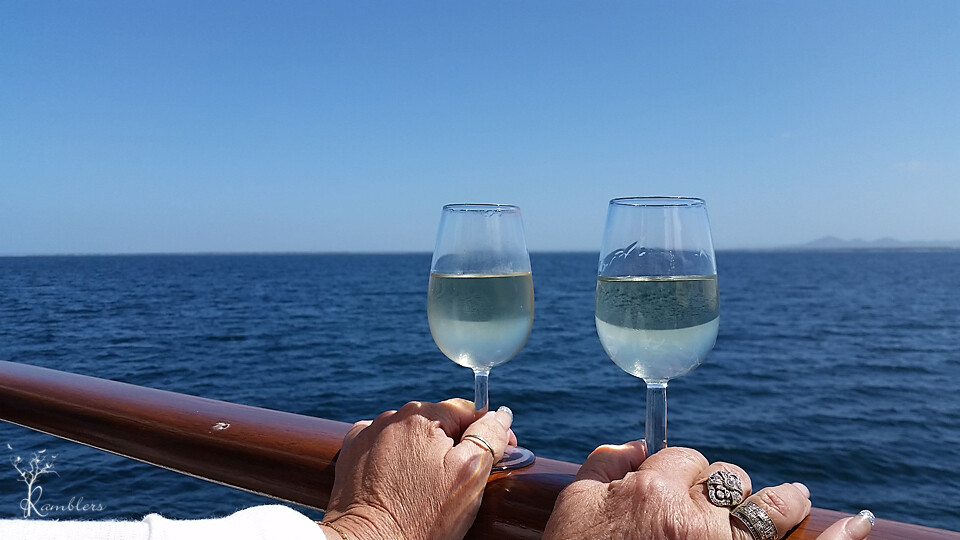
Geelong
She arrived in Geelong 20 mins late, around 2 pm, and we headed off looking for lunch. I lucked out when we chose the Customs House restaurant and bar. The food and service were amazing. Calamari was tender, the salad was delicious, and the chips were excellent. We followed that up with Belgian waffles, ice cream and berries, lubricated with a couple of glasses of Sauvignon and then waddled off to Geelong Station in search of our train.
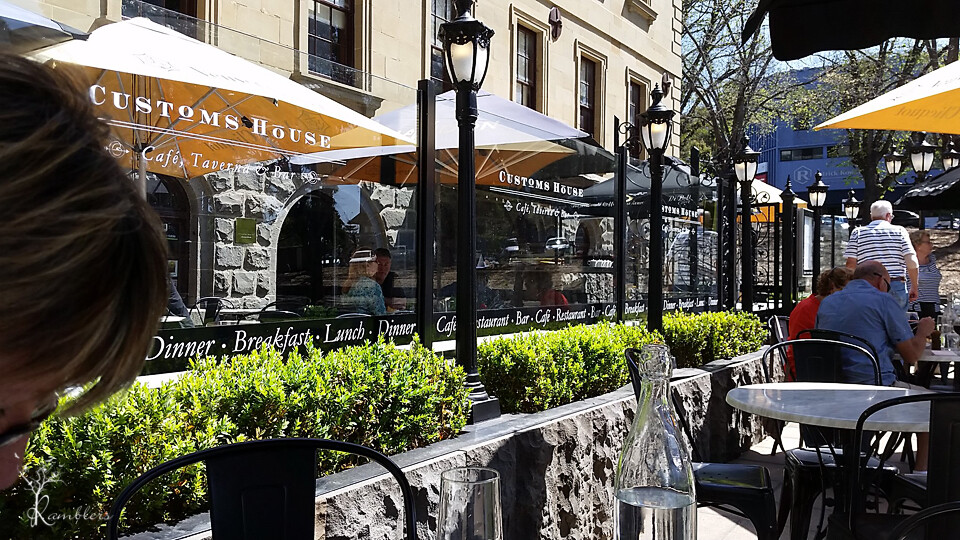
Steam Rail
Seating on the train was reserved, so we had a comfy seat all the w home. Carriages had beautiful ornate tin ceilings, windows between each ‘room’ that sat six people, and the air conditioning was open a window. Which we did so we could stick our heads out and see the train:)

One carriage was set up as a buffet car, so we lurched, rocked and rolled our way down there to check ut it. It made me think back to the old movies with Cary Grant etc., walking down the narrow corridor with people in tiny rooms to the side. How did the heroine walk down those corridors in heels? Is that why she always fell into the hero’s arms? 🙂
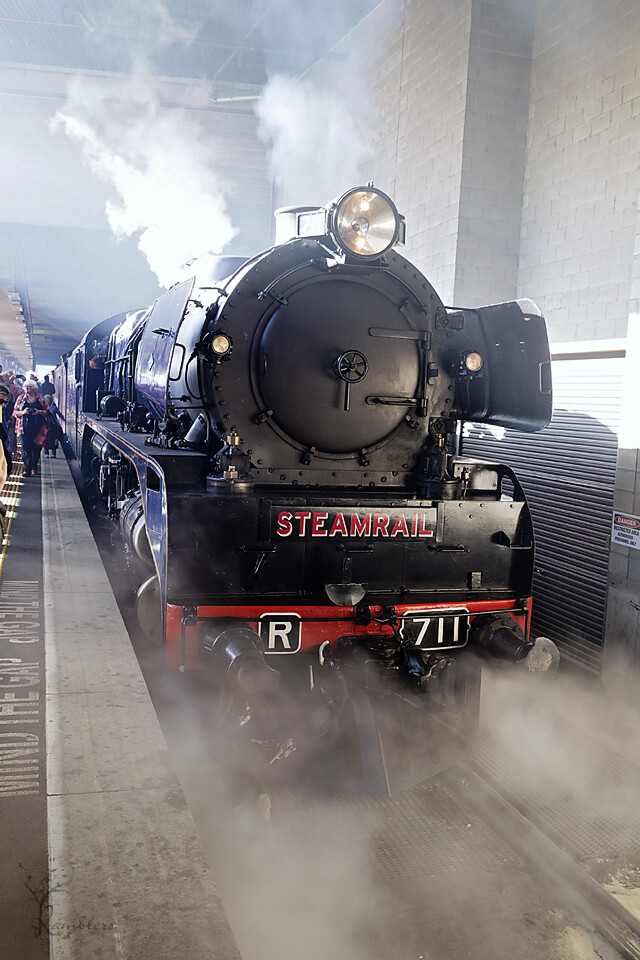
I must say I didn’t realise steam trains went so fast… we flew along from Geelong to Southern Cross Station in about 90 mins with the driver pulling the whistle just about all the way home. We spotted loads of photographers lining the tracks with tripods set up taking photos. Everyone watching and waving the train go past had a big smile on their face. There is just something about steam trains and steam whistles that brings out the kid in everyone.
It was our second and last morning in Eden, and we were on our way back up the coast on the return journey to Sydney. This time we headed to Quarantine Bay, not far from where we were staying. Our route would take us from Quarantine Bay to Kiama, but we planned to get another sunrise in first and hopefully spot more pelicans.

Quarantine Bay
Yet again, we were blessed with a beautiful sunrise. The weather gods were being genuinely kind to us.

Desperate times
Driving from Quarantine Bay to Kiama, we headed off in search of coffee. Desperately in search of coffee. Heads up, in Eden on a Sunday, NO coffee shops, cafes, bakeries, or anything remotely similar to coffee sellers are open before 9 am. It was only 7.30 am. So we started heading out of Eden with the naive hope of something open in the next town. No. Nor the next one, nor the one after that. It wasn’t until we went through Cobargo around 8.30 am that we found a little bakery that sold coffee and cakes. To this day, the baker remains blissfully unaware of the role she played in our survival.

Fortified and revived, we stopped at Corunna Lake and Tuross River before reaching the Ulladulla Lighthouse’s first planned photo stop.
Warden Head Light, a.k.a Ulladulla Lighthouse
The Warden Head lighthouse is an active lighthouse on a headland south of Ulladulla. Constructed in 1873, the original oil lamp was replaced in 1920 with a flashing light powered by acetylene gas for automatic operation, before being converted to electricity. in 1964 The light is now battery operated. It is also one of the only two lighthouses in NSW made from iron plates.

Point Perpendicular
From Ulladulla, we headed to our next lighthouse stop – the Point Perpendicular Lightstation. Point Perpendicular is still an operating military base, and we were required to show ID to enter, along with a headcount of the car. I was waiting for them to get out the mirrors on long poles to check under the car 😉

The travel brochures promised, “Drive through natural scrub and beautiful spring wildflowers to Point Perpendicular Lighthouse, and the spectacular escarpment at Jervis Bay”. Unfortunately, we saw no wildflowers and no escarpment. Did do another few km’s on NSW Parks favourite surface, though. The rutted, potholed, gravel and dirt roads. And while this lighthouse didn’t reward us with snakes, we did see a wallaby and a rabbit.


Kiama
We finally arrived in Kiama late afternoon and, with fading light, headed for the Kiama Lighthouse (we were on for a hat trick) and the Kiama Blowhole.
The Kiama Lighthouse was erected in 1887 with an oil burner light visible for nine miles. It was subsequently upgraded to gas in 1920 and decommissioned. In 1969 it was connected to mains electricity.

The Kiama Blowhole
The Kiama Blowhole was discovered by George Bass in 1797 and sits alongside the Kiama Lighthouse. Huge, spectacular plumes of water shoot up from the blowhole every few seconds. We spent a pleasant hour at the blowhole and lighthouse before heading into town for dinner and then to our B’n’B for the night.



Today our plans were for Kiama and Cathedral Rocks. We were halfway through our trip along the south coast and chose Kiama for an overnight stop as Kiama and Bombo are only a few minutes apart. So, after a night at a B & B in Kiama, we headed down to Cathedral Rocks, Bombo, to set up at the ungodly hour of 5.30. With excellent hindsight, we had scouted the location the day before to find it in the dark, so getting there and setting up was problem-free. Cathedral Rocks are 10m high basalt columns, sea stacks, and a 20m high cliff that forms a 1km headland.

It was a gorgeous sunrise, and we were working on getting the sun – and slow exposures on the rocks. I had an ND1000 on and couldn’t work out why it was coming out so dark until I realised I still had the CPL on from the day before. Once I took that off and just used the ND, things started to come together.
We stayed there till about 8 am with the sun fully up… it was just a fabulous place. I would have liked to go to the Bombo Quarry or Boneyard after that, but we couldn’t find them the day before, so we just settled for the entire shoot at Cathedral Rocks. Which wasn’t a bad thing 🙂

Bombo is a must-do place for anyone who loves landscape photography… for me, it’s also a ‘must go back. However, I definitely still want to get the Boneyard and the Quarry.
Cathedral Rocks is located off Cliff Drive, take the Kiama Downs to turn off from the Princess Highway, and cross under the railway bridge at Bombo Beach.
After our whale cruise and lunch at the pier, we drove to the Green Cape Lightstation and Ben Boyd National Park. Our goal was the Green Cape Lightstation at the end of the park on the tip of the peninsula. The roads are listed as 2wd dirt roads?… NSW Parks is very impressed with the capabilities of 2wd cars. While not as bone-shaking as our trip to Kichega National Park, it was still a bumpy, potholed, rutted dirt road for 21 km.

Green Cape Lighthouse
At the end of the road, the Green Cape Lighthouse rises 29ft overlooking the peninsula. The Green Cape Lighthouse was the first cast concrete lighthouse built in Australia. It also distinguishes it as NSW’s second tallest and most southernmost lighthouse.

A fence surrounds the lighthouse, so it’s impossible to get into the light station grounds (rented out as holiday rentals), but we found that heading down towards the cliffs gave us a good viewpoint.
The Pinnacles
Once on our way again and still within Ben Boyd National Park, we drove to the Pinnacles. Once you park the car, it’s an easy 1.1km loop to the pinnacles and back. The Pinnacles were formed due to erosion of the cliffs. They formed about 65 million years ago and are made of soft white sands and red gravel clay. When part of the cliff fell away, it exposed the red clay and white sands. Fortunately, we didn’t see any more snakes. But we kept a good eye out and thanked our forethought for wearing leather hiking boots!
Davison Whaling Station
Our final stop at Ben Boyd National Park was pretty underwhelming. The lady at the Information Center recommend that the Davison Whaling Station was well worth a visit. It may have been once. But there is a quaint little shack, but there isn’t much else. The whaling station itself was a couple of signs and an old tin pot.


Day Three of our South Coast road trip brought us to the highlight (for me) of our journey. And the main reason we were in Eden – the Eden Whale Watching cruise on Twofold Bay.
Whale Watching Cruise
Cat Balou run cruises all year round from a 72 seat vessel, but September to November is whale watching time during the Humpback Whale southern migration. Whales travel a distance of around 10,000km on their migration. While the whales pass Eden on both the southern and northern migration, it’s only on the southern migration that they are close enough to shore to see. Most are only seen further out to sea on the northern migration. And only a very few venture into Twofold Bay.
Twofold Bay
Leaving Snug Cove at Eden Wharf, we cruised around the Bay for three and half hours. We sighted pods of dolphins, a few seals and three whales. Twofold Bay is one of the deepest natural harbours globally. It is also the only port on the Sapphire Coast with direct ocean access and no sand bars to negotiate.

Ben Boyd Tower
From the 1820s until 1930, men in open wooden boats hunted whales in Twofold Bay. A pack of killer whales assisted them. Ben Boyd Tower was initially planned as a lighthouse but was used as a whale spotting tower. After being hunted close to extinction, the population was estimated at 200 in 1962. In 2013 the whale population was estimated at 14,000 and increased by 11% a year.

I had been hoping to get a whale leaping out of the water, but they weren’t cooperating that day. We had to settle for several ‘breachings’ where the whale generates enough upward force with its powerful tail flukes to lift two-thirds of its body out of the water before coming down in a thunderous splash.

The underpart of each tail fluke is like a ‘fingerprint’ with no two tails having the same markings. Whale Facts
Day Two of our Sapphire Coast road trip along the South Coast of NSW took us from Glasshouse Rocks, Narooma to Eden. After doing three abandoned locations the day before, we were now up early to catch a Glass House Rocks sunrise in Narooma.

Narooma Surf Beach
The Narooma surf beach is beautiful, a one km long, semi-circular cove overlooking Montague Island, with the Glass House Rocks at the southern end and Australia Rock at the northern. The Geological Society of Australia recognises the Glasshouse Rocks as between 510 and 440 million years old. They are the result of volcanic activity hundreds of millions of years ago. Unfortunately, we got so involved with admiring the sunrise we never walked over to see the Glasshouse Rocks up close 🙁

Our ‘plan’ we had been to was to go out to Montague Island after breakfast. Still, none of the tours was running that day due to heavy seas out on the ‘bar’, so after breakfast overlooking the beach wandered down to Australia Rock before heading off towards Eden.

Camel Rock
Leaving Narooma, we headed down the Princes Highway to Bermagui and Camel Rock. The second part of the plan that didn’t go as planned was that Horsehead Rock was inaccessible by now due to no longer being low tide. Horsehead Rock is past Camel Rock, across a short rocky beach only accessible at low tide. So scratch Horsehead Rock this trip.

Camel Rock is ten minutes north of Bermagui along Wallaga Lake Road. The surf and rock formations are fabulous. I could have stayed there all day.


Blue Pool
Also in Bermagui is the Blue Pool. A large rock pool at the base of a dramatic cliff. There are two pools there. One seems full all the time, and the first pool feeds the other as the tide comes in. Something we didn’t realise until the water came gushing over the lip as we stood in the empty pool photographing the full pool!


Wallaga Lake
Our last stop before Eden was Wallaga Lake. We were driving past and spotted some Pelicans, and Pied Cormorants on the sandbar, so we pulled in for some shots.


They were probably bout 100ft from shore. but my travelling friend got out her ‘big boy’, and we got them just fine 🙂










